#st fillan
Text
9th January
St Fillan’s Day

Source: Musem of London/ BBC
Today is St Fillan’s Day. Not much is known about this saint apart from the efficacy of his Pool in the valley of Strathfillan in curing mental illness. The afflicted were immersed in the waters and then left tied up in the nearby St Fillan’s Chapel. If they worked themselves loose from their bonds by the following morning, this meant they were cured. Unsurprisingly, St Fillan’s Pool no longer plays a role in modern psychiatric practice. Also on this day in 1684, a huge Frost Fair took place in London. A series of hard winters in late seventeenth and early eighteenth century England resulted in the River Thames freezing over under several feet of ice. This allowed Londoners to celebrate actual fairs on the river’s surface including sideshows, horse racing, bear-baiting, drinking and gambling. The ice was so thick it was even possible to light large fires to roast oxen on the frozen waters, with no fear of it melting. Although the winters were much colder then than now, the old London Bridge was also a contributor, making the Thames’ waters sluggish and more prone to freezing. Once the new London Bridge let the river flow, the frost fairs were no more.
Lazy male agricultural workers managed to wrangle one last day off on Plough Monday (the first Monday after the 6th and yesterday in 2024) by turning the official day of the return to the fields into a final episode of midwinter mischief and mayhem. On Plough Monday, the so-called Plough Jags went carolling through the streets, pulling a plough and demanding donations door to door. If anyone refused on the grounds it was about time these ne’er-do-wells went back to work, their gardens were ploughed up. Apparently this act of extortion and vandalism was known as being “jagged”.
#english folklore#st fillan#scottish folklore#plough monday#frost fairs#strathfillan#st Fillan’s pool#plough jags
0 notes
Text
But I have solemn vows to pay,
And may not linger by the way,
To fair St. Andrews bound,
Within the ocean-cave to pray,
Where good Saint Rule his holy lay,
From midnight to the dawn of day,
Sung to the billows’ sound;
Thence to Saint Fillan’s blessèd well, Whose springs can frenzied dreams dispel,
And the crazed brain restore:
Saint Mary grant that cave or spring Could back to peace my bosom bring,
Or bid it throb no more!
Hmm, these are the words that the Palmer of the last canto first tells lord Marmion before they finally depart to the Scottish court. If I understand this correctly, the palmer can only guide lord Marmion up to a point in Scotland because he as a palmer needs to find another holy place to visit, and pray for his soul once again.
I wonder if this will affect the journey as it goes on since lord Marmion now seems to have to anticipate a possible separation when the palmer is supposed to guide him, and his men all the way up to the steps of the Scottish court.
Lord Marmion drank a fair good rest,
The captain pledged his noble guest,
The cup went through among the rest, Who drained it merrily;
Alone the Palmer passed it by,
Though Selby pressed him courteously.
However, even if that is a possibility it doesn't seem to deter lord Marmion from partying like a lord before departing. Even the description of the depart is written to be this new hopeful beginning of an adventure with a political intent.
Could this be foreshadowing of something? How the religious figure leaves the protagonist as a way to signal how something dreadful is going to shift the narrative?
#I do already know how the perspective changes lord Marmion's role as a protagonist but it makes it better#When you have the whole picture in mind I can see how the way Marmion is painted is... Too good#So yeah they departed!#marmion daily#marmion#poetry
3 notes
·
View notes
Photo


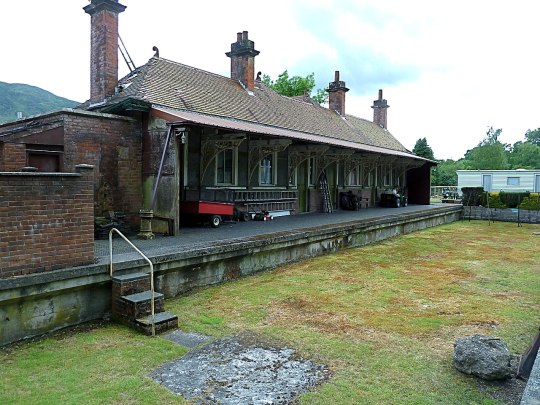
St Fillans railway station.
St Fillan's is a fine and largely complete example of an early 20th century rural railway station grouping in Perth and Kinross and the most complete station group remaining on the former Comrie, St Fillans and Lochearnhead Railway. The former booking office and station is notable for its decorative cast-iron brackets supporting the platform canopy, its corbelled gable-head and tall brick stacks.
St Fillan's station was built for the Lochearnhead, St Fillans and Comrie Railway that ran between Balquhidder Station and Comrie. The line was opened in sections with St Fillan's station opening in 1901. The company was absorbed soon after by the Caledonian Railway in 1902. The railway continued to Lochearnhead in 1904 and Balquhidder in 1905. The line closed fully in 1951, , but the track remained in situ until 1959 as the line was used to transport materials to the Hydro Electric construction sites in the area.
A short section of the line between Balquhidder station and Lochearnhead has been converted into part of the Rob Roy Way; a cycle path that runs between Drymen and Pitlochry, using much of the old Callander and Oban Railway trackbed along its route.
Most of the stations along the route have now been converted into caravan parks, with the exception of Lochearnhead station, which has been restored by Hertfordshire Scouts.
43 notes
·
View notes
Text
Freitag, 16. September 2022, 13 Uhr, Loch Earn
Traditionell der Einstieg in die Berge, einmal ins kalte Wasser. Loch Earn ist wie ein guter Freund, der immer schon da ist, und nie enttäuscht, eine verlässliche Bank aus grauem, kalten, rauen Wasser. Ich freue mich jedesmal, wenn ich in St Fillans das Ostende des Lochs erreiche, weil man an diesem Punkt nur noch See vor sich hat, und dann ist man richtig in den Bergen. Die Badestelle liegt irgendwo dazwischen. Ich muss mich ein paar Minuten konzentrieren, um den richtigen, den einzig badetauglichen Parkplatz zu erwischen, den mit Bäumen und der steilen Küste. Aber ab dann geht der Urlaub los.
3 notes
·
View notes
Text

Today we celebrate the Blessed Memorial of St. Fillan. Pray for us! Read up on the heroic life of faith of this Holy man of God. Also, listen to the Mass Readings and Psalm, along with the Morning Prayer of the Church. Draw closer to the Most Sacred Heart of Jesus. God love you.
0 notes
Text

SAINTS JANUARY 19
STS. MARIUS, MARTHA, AUDIFACE AND ABACHUM, MARTYRS ON THE VIA CORNELIA, Marius and his two sons were beheaded on the Via Cornelia and their bodies were burned. Martha was murdered in a place called Nymphae Catabassi, thirteen miles outside of Rome.
Jan 19
ST. GERMANICUS MARTYR OF PHILADELPHIA Jan 19
St. Canute IV Martyred Roman Catholic king of Denmark, sometimes called Knud. The illegitimate son of King Sven II Estridson of Denmark, Canute succeeded his brother Harald III Hen in 1081. After marrying Adela, the sister of Count Robert of Flanders, Canute built churches and monasteries. In 1085, he planned an invasion of England, but the nobles of the court rebelled against him and forced him to flee to the isle of Funen. There, Canute, his brother Benedict, and seventeen companions were slain in the church of St. Alban Feastday Jan 19
ST. JOHN, BISHOP OF RAVENNA
St John was Bishop of Ravenna at a time when the whole country was being devastated by the war with the Lombards. He was a holy pastor, entirely dedicated to caring for the needs of his people and his church. Pope Gregory the Great’s book, “The Rule for Pastors” to him. He died in 595. Jan 19
St. Fillan. A son of Feriach and St. Kentigerna, was also known as Foelan. He became a monk in his youth and accompanied his mother from Ireland to Scotland where he lived as a hermit near St. Andrew's monastery for many years, and then was elected abbot. He later resigned and resumed his eremitical life at Glendochart, Pertchire, where he built a church and was reknowned for his miracles. Various legends attribute the most extravagant miracles to him, such as the one in which his prayers caused a wolf that had killed the ox he was using to drag materials to the church he was building, to take the ox's place. Fillan died on January 19…
St. Henry of Sweden. Henry was an Englishman of the twelfth century residing at Rome. In 1152, he was consecrated Bishop of Uppsala, Sweden, by the Papal Legate Nicholas Breakspear, who later became Pope Adrian IV. In 1154, St. Eric, King of Sweden, led a punitive expedition against the Finns in retaliation for their marauding activity into Sweden, and Henry accompanied him. Eric offered peace and the Christian Faith to the people of Finland, but they refused. A battle ensued and the Swedes won. Henry baptized the defeated people in the Spring of Kuppis near Turku. When Eric returned to Sweden, Henry remained behind, working to convert more of the Finns. To this end he built a church at Nousis, which became his headquarters. In time, Henry met a violent death on account of his love of God. A converted Finnish soldier named Lalli had murdered a Swedish soldier. After careful consideration of the facts and assiduous prayer, Henry imposed the penalty of excommunication on the murderer. Lalli became enraged and slew the saintly bishop with an ax. Henry was buried at Nousis, and miracles were reported at his tomb.
St. Branwallader, 6th century. Bishop of Jersey, England. A part of his remains were translated by King Athelstan in 935.
St. Wulfstan, 1095 A.D. Wulfstan (1008-1095) A Bishop and reformer, also called Wulstan and Wolstan. Born at Long-Itch ington, Warwickshire, England, he studied at the abbeys of Evesham and Peterborough, received ordination, and joined the Benedictines at Worcester. Wulfstan served as treasurer of the church at Worcester, was prior of the monastery, and finally was named bishop of Worcester in 1062. After overcoming initial doubts about his ability to hold the office of bishop, he demonstrated such skill after the Norman Conquest that he was the lone bishop to be kept in his post by William the Conqueror (r. l066-l087). For the next three decades, Wulfstan rebuilt his cathedral, cared for the poor, and struggled to alleviate the harsh decrees of the Normans upon the vanquished Saxons. Wulfstan died while engaged in the daily ritual of washing the feet of a dozen poor men. He was canonized in 1203.
St. Nathalan. Hermit and bishop of Tullicht, best known for his miracles. A Scot born to a noble family near Aberdeen, he became a hermit and performed miracles during a famine. Later he became a bishop, and during one visit to Rome was consecrated by the Holy Father. He returned to Tullicht, where he built churches and conducted missionary activities.
0 notes
Text
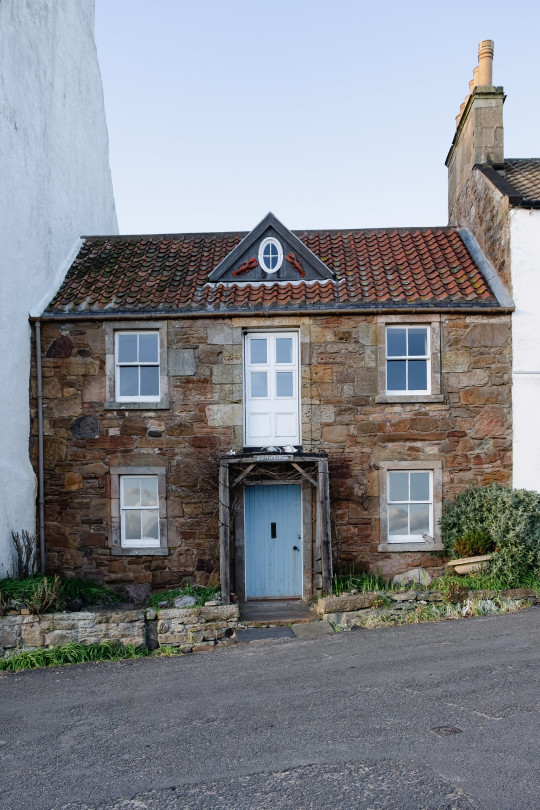
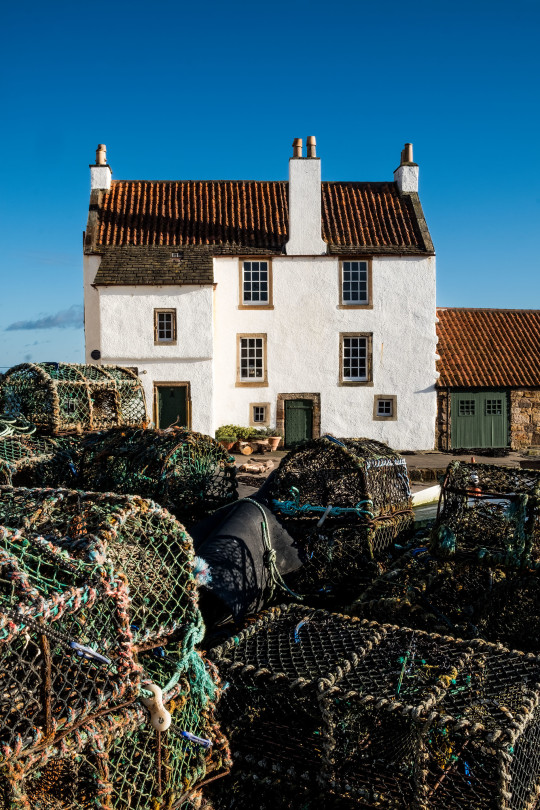



Scotland (2) (3) (4) (5) by Tobias Verfuss
Via Flickr:
(1) Lobster Cottage, Crail.
(2) Gyles House, Pittenweem.
(3) Patch of saxifrage near St. Fillan's Cave in Pittenweem.
(4) Rabbits in synchrony
(5) Westshore, Pittenweem.
1 note
·
View note
Text
Feast of St Fillan
Feast of St Fillan, who tamed the urisk nature-spirits, whose preserved arm was carried before the victorious armies of Robert the Bruce, and whose Holy Pool at Strathfillan was believed to cure insanity.
0 notes
Photo
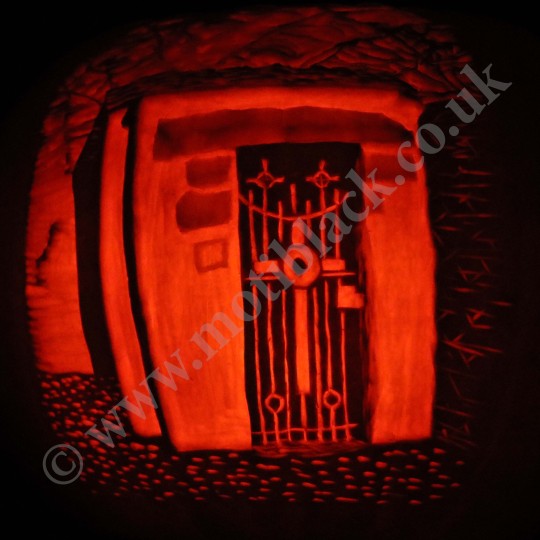
My latest pumpkin carving, The gate to St Fillan’s Cave on Cove Wynd in Pittenweem.
1 note
·
View note
Photo
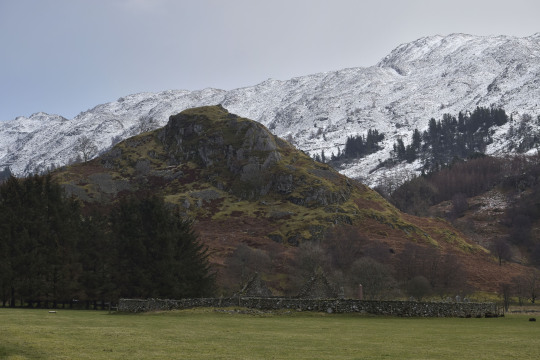
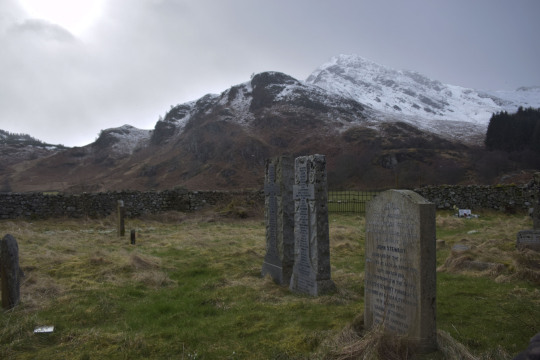
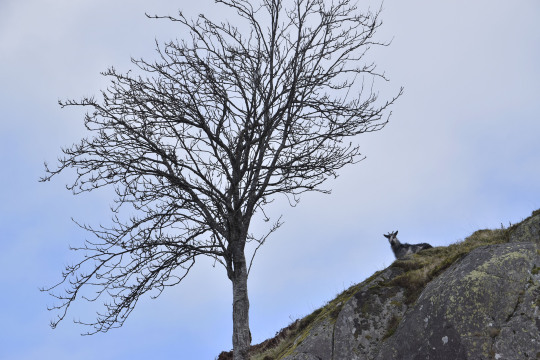




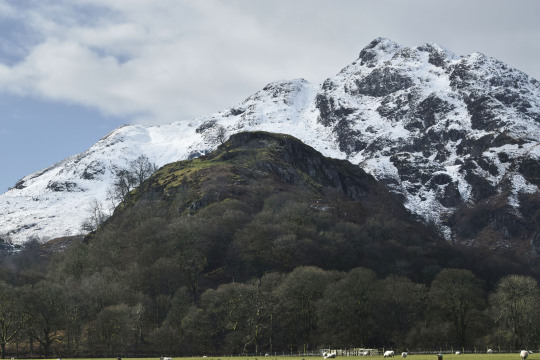
Dundurn Hillfort and St Fillan’s Graveyard
We re-visited Dundurn for a little hillfort tour I wanted to film for my channel. Unexpectedly, we weren't the only ones there. We found a tribe of goats, that may well be 'primitive British goats', animals abandoned by the Highlanders during the Highland clearances. Those goats turned feral and started roaming the Highlands. Dundurn itself is a Pictish hillfort with a strong defensive character and remains of the walls still present. It was most likely used in the Early Medieval Period. Limited excavations revealed artifacts, such as glass ornament and a silver strap. Perhaps it was a place where an important family lived. The death of an unspecified king is linked to Dundurn in the Annals of Ulster. On the way to the hillfort we stopped by St Fillan's Graveyard, dedicated to the Leper Saint St Fillan (Dundurn is the name of the hillfort, but the hill is known as St Fillan's Hill). He is the patron saint of the mentally ill.
#Dundurn#hillfort#st fillan#st fillans#graveyard#Perthshire#Scotland#visitscotland#Scottish history#Scottish Highlands#archaeology#history#picts#pictish#goat#goats#hillwalking#hiking#nature#photography#nature photography#landscape photography#photographers on tumblr
542 notes
·
View notes
Text

Fillan, son of Feriach and St. Kentigerna, was also known as Foelan. He became a monk in his youth and accompanied his mother from Ireland to Scotland where he lived as a hermit near St. Andrew's monastery for many years, and then was elected abbot. He later resigned and resumed his eremitical life at Glendochart, Pertchire, where he built a church and was reknowned for his miracles. Various legends attribute the most extravagant miracles to him, such as the one in which his prayers caused a wolf that had killed the ox he was using to drag materials to the church he was building, to take the ox's place. Fillan died on January 19. His feast day is January 19.

1 note
·
View note
Photo
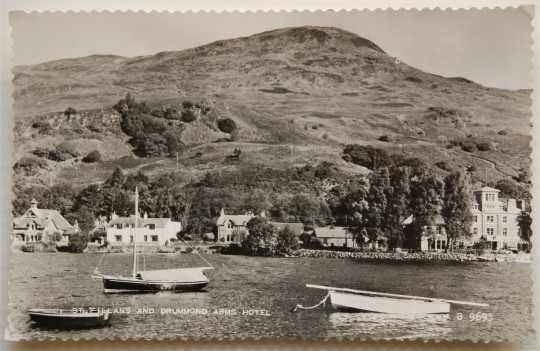
Drummond Arms Hotel, St. Fillans, Scotland - 1950s Postcard
3 notes
·
View notes
Text
Got to figure out a way to bring to my paid work the same energy that makes me go through the mediaeval Scotland section of the Chambers Street Museum like an enthusiastic history-loving golden retriever
#Not me running between the Bute Mazer and St Fillan's bell and the Lamont harp like !!!! !!!! !!!! !!!!#with a smaller more subdued !! :-/ ! at the Maiden#Struggling with concepts though#Is it still technically the Chambers Street museum if this section mostly faces out onto George IV Bridge#National Museum of Scotland#Or whatever#Athens of the North
6 notes
·
View notes
Text
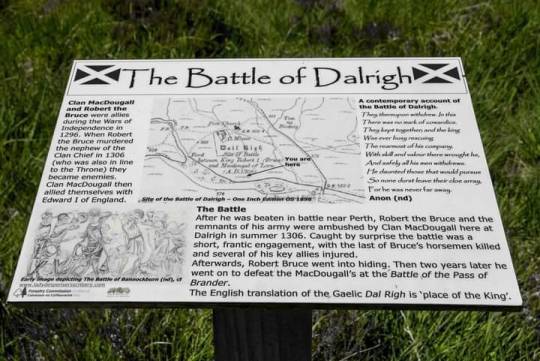

August 11th 1306 saw the Battle of Dalrigh.
The battle involved John MacDougall of Lorne, kinsman of John Comyn and the army of King Robert the Bruce.
The MacDougalls of Lorne were allies of the MacNabs and the Comyns, bitter rivals of Robert the Bruce. In 1306, Bruce met an English army at Methven, his army was all but destroyed and the remnants, Bruce included, made their way into the Highlands of Perthshire to evade any other English army detachments.
It is not sure if they travelled up Earnside or Tayside but they certainly made their way up Glen Dochart. They would not have been able to travel in this area without being noticed by the MacNabs, the most powerful clan in the area at the time.
The MacNabs passed the word to the MacDougalls who set a trap. Robert the Bruce’s party stopped and rested at a small church at Strath Fillan where the abbot blessed Robert the Bruce. Bruce was very grateful for this act as the Church of Rome following the murder of the Red Comyn in Dumfries had excommunicated him.
This church was still a church of the Culdees, the original church of St. Fillan and it had no allegiance to the Church of Rome. The Abbot is also supposed to have warned Bruce he was in dangerous territory and should get out as soon as possible. It was not long after the party had left Strath Fillan that they were ambushed by the MacDougalls and supposedly the MacNabs at Dalrigh (the Kings Field) near Tyndrum.
Bruce barely managed to escape with his life. A MacDougall clansman got close enough to grasp Bruce’s cloak before he was killed. Legend has it when the clansman was found later he was still clasping the cloak and in his hand was a brooch that held the cloak.
The MacDougalls still have the alleged brooch to this day - the Brooch of Lorn, although doubt has been cast on whether it is old enough to be the actual brooch from the legend.
Bruce and most of his party escaped and dispersed throughout the Highlands. More detail about the battle here https://sonofskye.wordpress.com/2014/10/16/robertthebruce-dalrigh/
4 notes
·
View notes
Text

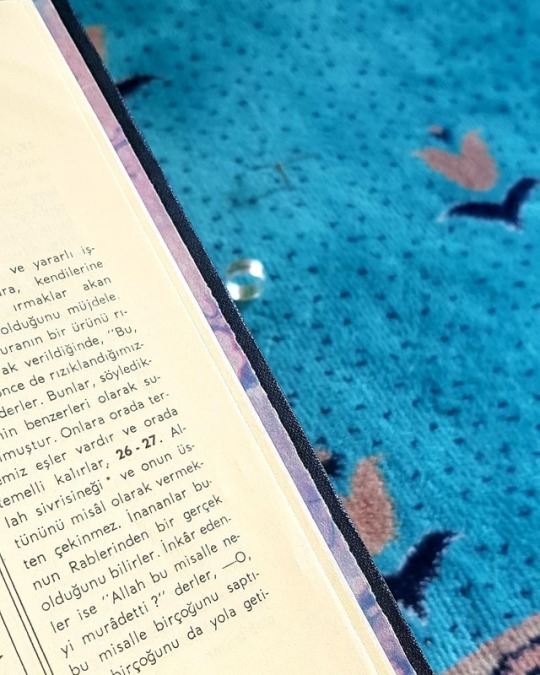
Prof.Dr. Galin Biserof Asenof ilginç bir buluşa imza attı.. Bir müslüman meslekdaşının "Her canlı ALLAH’ı tespih etmektedir" sözünü laborotovar ortamında test etmeye karar vererek Kuran-ı Kerim'i araştıran Asenof aşağıdsaki ayet sebebi ile sivri sineği bu işe en uygun hayvan olabileceğini varsaymış.
Ayet şu :
“Şüphesiz Allah, bir (dişi) sivrisineği de, ondan üstün olanı da, (herhangi bir şeyi) örnek vermekten çekinmez. Böylece iman edenler, kuşkusuz bunun Rablerinden gelen bir gerçek olduğunu bilirler; inkâr edenler ise, ‘Allah, bu örnekle neyi amaçlamış?’ derler. (Oysa Allah,) Bununla birçoğunu saptırır, birçoğunu da hidayete erdirir. Ancak O, fasıklardan başkasını saptırmaz.” (Bakara Suresi, 26)
Prof.Dr. Galin Biserof Asenof'un yaptığı araştırmalara göre sivri sinekler saniyede 1000-2000 kez kanat çırpmaktalar ancak sinirler en fazla saniyede 100 sinyal yollayabiliyor. Her bir sinyalde kanat otomatik olarak 10-15 kez kanat çırpıyor.
Asenof test sırasında sivri sineğin kanat sesini önce lazerli bir mikrofon yardımı ile kaydedip ;ardındanda sesi yavaşlatarak insan kulağının algılama ve konuşma ritmine indirgemiş . Sesi dinlediğinde kulaklarına inanamamış.
Asenof'un iddiasına göre insan kulağının duyacağı seviyeye indirgenen ses kaydında sivrisinek kanatlarıyla adeta Allah'ın ismini zikrediyor..
#ulan taslaklara baska bi kaydın üstüne yapıştırdım#ordan kaydettim#ordan o kaydi sildim#sonra tekrar düzenledim#fallen fillan#her neyse dinsizin hakkından imansız gelirmiş#bi şekilde postu tekrar düzenledim#mescidde namaz kılıyordum#sinek geldi önüme#namaz bitti hala orda#sonra aklıma bu ayet geldi#sonra kuranı açtım o ayeti#sonra aklıma bu profesör geldi#sonra bunlar oldu#sonra aklıma sen geldin#yok sen gelmedin sen ne alaka#ت#şerefsiz deyvite rağmen paylaştım sonunda
101 notes
·
View notes
Text

SAINTS JANUARY 19
St. Branwallader, 6th century. Bishop of Jersey, England. A part of his remains were translated by King Athelstan in 935.
St. Wulfstan, 1095 A.D. Wulfstan (1008-1095) A Bishop and reformer, also called Wulstan and Wolstan. Born at Long-Itch ington, Warwickshire, England, he studied at the abbeys of Evesham and Peterborough, received ordination, and joined the Benedictines at Worcester. Wulfstan served as treasurer of the church at Worcester, was prior of the monastery, and finally was named bishop of Worcester in 1062. After overcoming initial doubts about his ability to hold the office of bishop, he demonstrated such skill after the Norman Conquest that he was the lone bishop to be kept in his post by William the Conqueror (r. l066-l087). For the next three decades, Wulfstan rebuilt his cathedral, cared for the poor, and struggled to alleviate the harsh decrees of the Normans upon the vanquished Saxons. Wulfstan died while engaged in the daily ritual of washing the feet of a dozen poor men. He was canonized in 1203.
St. Henry of Sweden. Henry was an Englishman of the twelfth century residing at Rome. In 1152, he was consecrated Bishop of Uppsala, Sweden, by the Papal Legate Nicholas Breakspear, who later became Pope Adrian IV. In 1154, St. Eric, King of Sweden, led a punitive expedition against the Finns in retaliation for their marauding activity into Sweden, and Henry accompanied him. Eric offered peace and the Christian Faith to the people of Finland, but they refused. A battle ensued and the Swedes won. Henry baptized the defeated people in the Spring of Kuppis near Turku. When Eric returned to Sweden, Henry remained behind, working to convert more of the Finns. To this end he built a church at Nousis, which became his headquarters. In time, Henry met a violent death on account of his love of God. A converted Finnish soldier named Lalli had murdered a Swedish soldier. After careful consideration of the facts and assiduous prayer, Henry imposed the penalty of excommunication on the murderer. Lalli became enraged and slew the saintly bishop with an ax. Henry was buried at Nousis, and miracles were reported at his tomb.
St. Fillan. A son of Feriach and St. Kentigerna, was also known as Foelan. He became a monk in his youth and accompanied his mother from Ireland to Scotland where he lived as a hermit near St. Andrew's monastery for many years, and then was elected abbot. He later resigned and resumed his eremitical life at Glendochart, Pertchire, where he built a church and was reknowned for his miracles. Various legends attribute the most extravagant miracles to him, such as the one in which his prayers caused a wolf that had killed the ox he was using to drag materials to the church he was building, to take the ox's place. Fillan died on January 19…
St. Nathalan. Hermit and bishop of Tullicht, best known for his miracles. A Scot born to a noble family near Aberdeen, he became a hermit and performed miracles during a famine. Later he became a bishop, and during one visit to Rome was consecrated by the Holy Father. He returned to Tullicht, where he built churches and conducted missionary activities.
St. Canute IV Martyred Roman Catholic king of Denmark, sometimes called Knud. The illegitimate son of King Sven II Estridson of Denmark, Canute succeeded his brother Harald III Hen in 1081. After marrying Adela, the sister of Count Robert of Flanders, Canute built churches and monasteries. In 1085, he planned an invasion of England, but the nobles of the court rebelled against him and forced him to flee to the isle of Funen. There, Canute, his brother Benedict, and seventeen companions were slain in the church of St. Alban Feastday Jan 19
STS. MARIUS, MARTHA, AUDIFACE AND ABACHUM, MARTYRS ON THE VIA CORNELIA, Marius and his two sons were beheaded on the Via Cornelia and their bodies were burned. Martha was murdered in a place called Nymphae Catabassi, thirteen miles outside of Rome.
Jan 19
ST. GERMANICUS MARTYR OF PHILADELPHIA Jan 19
ST. JOHN, BISHOP OF RAVENNA
St John was Bishop of Ravenna at a time when the whole country was being devastated by the war with the Lombards. He was a holy pastor, entirely dedicated to caring for the needs of his people and his church. Pope Gregory the Great’s book, “The Rule for Pastors” to him. He died in 595. Jan 19
1 note
·
View note